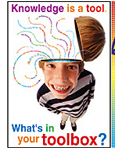My last reflection mentioned this quote:
We shall not cease from exploration
And the end of all our exploring
Will be to arrive where we started
And know the place for the first time. T.S. Elliott
Now at the end of this course, I look back to the beginning and see the journey I have come through to get here. My last reflection post was a reflection on mapping:
These readings challenged me to try to put myself on the map.
So I looked for the place where ET fits on the map. The first map doesn’t have a place for educational technology, but ET feeds into every one of the technologies presented. As we work with students and integrate technology, every aspect and technology discipline is touched on through our work at the elementary level … it is not specific. The narrowing of the road tends to begin at the high school and continues into community college/university levels.
The venn diagram map was astounding in clarifying and complicating my ‘world view’ relating to educational technology. The accompanying readings and real life examples helped to explain these world views. As I read through for the first time I thought …. oh my… I’m a radical humanist. (I was trying to find my place on the map). As I reread, I had moved myself further into the humanist, less radical. Maybe I need to reread and rethink … or maybe my place on this map will change each time I read it, because I am being shaped by the reading?!
“Charts or maps are not neutral” and “Technology is not neutral” are two statements that really resonated. The concluding statement “the practice of education (with or without technology) is deeply theoretical. There is no such thing as education not informed by theory.” brought me right back to … where am I on the map? What theories inform how I educate .. with or without technology? What stance do those theories take?
What world views (views of education) do I present as I write my essay? My daughter, who has become my editor, presented the idea that I speak of education as process rather than product. I had not thought of that, nor did I explicitly state that view, but it was evident in the ideas and concepts I was presenting. That brought me to … I am not neutral and I can never be neutral when it comes to educational technology. I need to be aware of where I am coming from and what my interests are. Then I can become more aware of where others are on the map in relation to me … and not see their position as adversarial, but just as it is… that’s just where they.
One final thought as I was reading through and trying to put myself on the map… I made the connection of ‘google maps’ to this course. On google maps you can zoom right in and get down to the street views, but once there you can’t see the big picture. When you have the long view, you can see the big picture, but you can’t see the details. This is just what this course has done. During each module we went into the street view of the topic and looked for the connections to educational technology. Now we need to zoom out and look at the big picture… how do all these ideas intersect or are they running parallel? Do they intersect down the road a ways? The maps presented can help, but it is up to me to ‘put myself on the map’.
